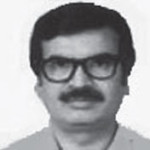Jharkhand one of the least-urbanised states in India with a population of 32 million, is aided with good forest cover (22 percent) and rainfall (1200 MM). But undulating topography and underlain crystalline hard rock offers little porosity and permeability for rainfall to stay. Due to paucity of surface sources and shallow aquifer, drinking water supply in present times primarily depends on ground water.
As on 1 April 2012, 29,615 villages in the state share a network of 3,79,807 hand pumps1. Pipe water supply and sanitation coverage in rural areas are around seven percent and 11 percent respectively2. The state government spends over Rs. 150 crores annually to provide water supply to its rural population, which constitutes 75 percent of its total population, spread across 24 districts. Still a number of the rural water supply schemes are constrained either by limited quantity/ quality of water available.
In last 10 years, 11 blocks of the state were categorised as semi critical to over exploited by Central Ground Water Board due to rapid urbanisation and industrial exploitation of ground water.
Water, sanitation and hygiene programme
There is high precipitation that goes into waste. And there are hilly habitations occupied by primitive tribes that are literally running out of water. The key challenge for the state in context of optimal utilisation of water is ensuring uninterrupted drinking water supply to rural households as per the norms fixed by National Rural Drinking Water Programme. It proposes to ensure 70 liter per capita per day of water and assuring sustainable and on demand water supply to rural habitation to ensure individual and institutional sanitation requirement including environmental sanitation. The supply should be adequate enough to maintain acceptable level of hygiene and safety standards.
Further the above challenges are to be met without compromising on fundamental principles of source and system sustainability in physical and financial terms.
At Jharkhand State Water and Sanitation Mission (JSWSM) we aim to enhance rural pipe water supply and sustainable sanitation solution reaching at least 45 percent and 80 percent of the rural household by the end of 12th five year plan period respectively through community involvement in planning and implementation of Water, Sanitation and Hygiene (WASH) programme.
In 2011, we have taken a conscious decision to ensure taking up issues of scheme sustainability and optimisation centre stage of Rural Water Supply Programme in a measured manner.
The first observation in context of Jharkhand villages was that there is neither any individual nor any institution that formally deals with water issues and extends door step solution to problems regularly faced by villagers. In a span of two years, we have been able to facilitate 27,957 Village Water and Sanitation Committees (VWSC) as a mandated body of Panchayat to address WASH issues in their own village.
A lady service provider called ‘Jal Sahiya’ is designated as treasurer of the committee and works as a nodal person in the village. She is entitled to take up water audit as part of baseline survey and facilitate demand generation for WASH schemes.
Secondly, before 2010 responsibility of water supply in rural areas was mostly with Drinking Water and Sanitation Department. Lack of manpower and procedural delay left most of the schemes underutilised. Minimal investment in operation and maintenance left infrastructure in a bad shape.
A conscious decision was made to transfer Operation and Maintenance in village Water facility to VWSC (Single Village Schemes). For multi-village schemes VWSC maintains the infrastructure for their own villages.
A sensitive yet functional pricing policy with minimum connection charge of Rs. 318 and monthly tax of Rs. 62 for piped water supply schemes managed by VWSC were brought in.
Use of stand post was discouraged in rural pipe water supply. To encourage community participation VWSC managed schemes are provided with equal amount of matching grant from government as incentive to the amount collected by them as water tax every year for Operation and Maintenance (O&M).
To encourage appropriate utilisation of energy, the charge of these schemes is reduced to 1/4th i.e. from Rs. 4.40/- to 1.10/- per unit. Single village schemes in distant villages were conceived with solar energy facility minimising use of generators.
As we understand, these initiatives helped a part of rural commune of the state, predominantly living below poverty line to appreciate water as a valuable commodity and judiciously use the resources in more than 300 rural pipe water supply schemes in the state.
At Jharkhand State Water and Sanitation Mission, the changes can simply be metered by enhanced participation of villagers and panchayat representative in any departmental programme and WASH function and vice versa. Today there are more than 70 schemes that are being run and operated by VWSCs in an optimal manner with VWSC investing or finding ways for conjoint solutions. Around 100 villages have been turned into sustainable open defecation free villages by linking it with measured water supply provisions.
Below we narrate a few exemplary cases of turning under supply and over supply to standardised supply and utilisation through conscious community participation.
Successful case studies
At Baliapur Rural Pipe Water Supply schemes individual users pay a fee of Rs. 170 per month. The committee allows use of stand post for households who cannot afford to pay individual tariff. Such households pay a token charge of Rs. 1 per day for water withdrawal. Present total collection of the user society is Rs. 4,00,000. They have stopped utilising non functional stand post and collect Rs. 1 per day per family. Present net savings of the user group is Rs. 4,00,000.
Mahudi Water Supply schemes are situated in far flank of Saranda Forest in West Singhbhum district. The scheme was started in 2003. When VWSC took charge in 2010, there were only 98 connections with supply stoppage of over 100 days a year. Presently they are supplying water to more than 300 households. They collect one time connection fee of Rs. 318 and monthly fee of Rs. 100 from all users. Utilising this amount they have created two additional sources and extended water supply to four additional habitations in last two years.
Bhandara Rural Pipe Water Supply scheme is situated on the banks of Koel River at a distance of 65 km from the state capital in the southern corner of Lohardaga district. Established in 2009, the VWSC owned water supply has generated around Rs. 68,000 through water connection and taxation. The scheme is a lifeline to 250 households; more than 80 percent of whom belong to socio-economically disadvantaged section.
Ghaghra Rural Pipe Water Supply scheme situated at a distance of 80 km from Ranchi city draws water from an intake well developed on the bank of Annya River. Since June 2013 VWSC took charge of water supply and started a drive for new water connection. In a span of four months, there was a demand for around new 100 connections. They are presently generating revenue of Rs. 5000/- per month which takes care of minor repair, operations, maintenance and electricity cost.
The way forward
At Jharkhand we look forward to community ownership of water sources and assets. We shall strategically look forward to create more pipe water supply schemes based upon surface water bodies, VWSC managed operation and maintenance, and investment on rain water harvesting so as to ensure optimum use of water and sustainability of water supply schemes.


